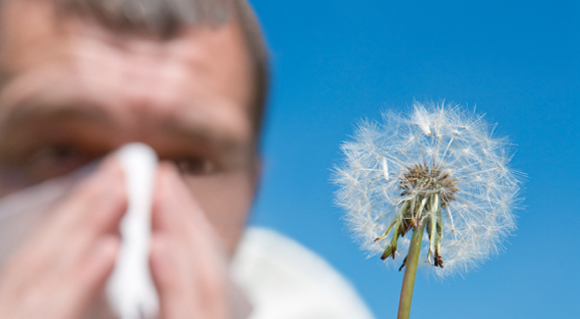With the ending of winter we all look forward to the long warm days of spring. The world goes from drab to bright with trees sprouting new leaves and flowers beginning to bloom. Spring heralds the beginning of sneezing, wheezing, itchy watery eyes and misery for allergic individuals.
In New York, spring brings out the worse allergic symptoms.
The season begins with tree pollination. The pollen particles are very small and light and are carried off on windy days (anemophily). The flowering stalks that droop down from the branches are called catkins. The trees depend on the wind to cross-pollinate. This strategy is also used later by grasses and weeds. Plants that produce large pretty flowers and fragrances depend on insect (entemophily) to cross- pollinate. These pollen particles are too large to be carried in the air and are transported by insects such as bees and butterflies and therefore not considered allergenic. Rose fever got its name because roses bloom the same time as the grasses and hay fever because hay is collected during the ragweed season. We, in effect, are innocent bystanders. Pollen counts vary with the weather. A wet winter and a dry windy spring increase the pollen count while a wet rainy spring washes pollen out of the air.
The allergic cascade begins in mid-March with the birch and beech trees, later come the maple, oak, hickory and linden. In May the grasses, such as timothy, orchard meadow fescue and rye, flourish. Lastly, the weeds get into the act such as, English plantain, sheep sorrel, pigweed and Russian thistle.
The symptoms they produce are intense itchy red watery eyes, stuffy, runny nose, constant sneezing, sinus pressure, headache, wheezing and also constitution symptoms such as weakness and tiredness. Many people become physically ill and take time off from work and or school. Tree sensitive subjects often have itchy irritated mouths and throats when eating fresh apples, pears, peaches and cherries. Cooked or canned fruit do not present a problem.
The pharmacy shelves of antihistamines and eye drops empty in a matter of weeks. Most allergy medications are now over the counter and physicians are limited to what is left to prescribe. The last “straw” is often a visit to the allergist who can allergy test and treat those who have failed on the available oral or nasal medications.
Dr. Peter Gontzes, is board certified in Allergy & Immunology and has 31 years of experience.
He is a resident of Middle Village and a member of the Juniper Park Civic Association.
Peter Gontzes MD
9231 57th Ave
Elmhurst, NY 11373
(718) 592-1731




